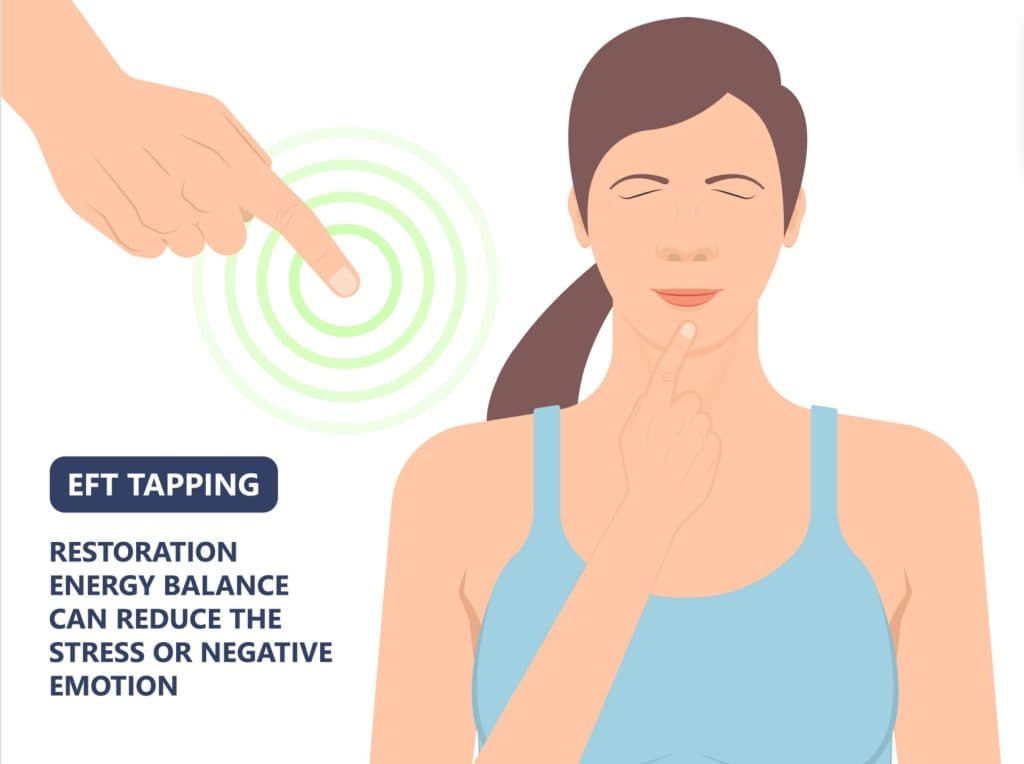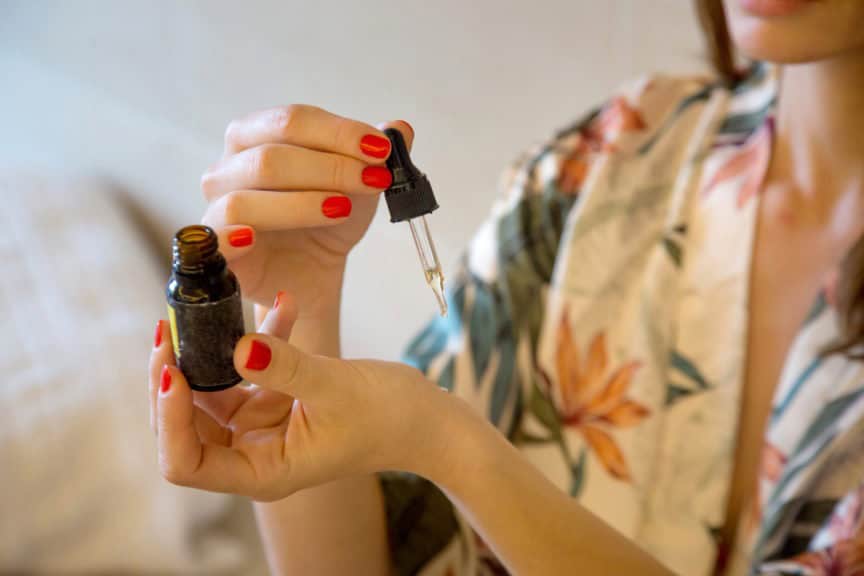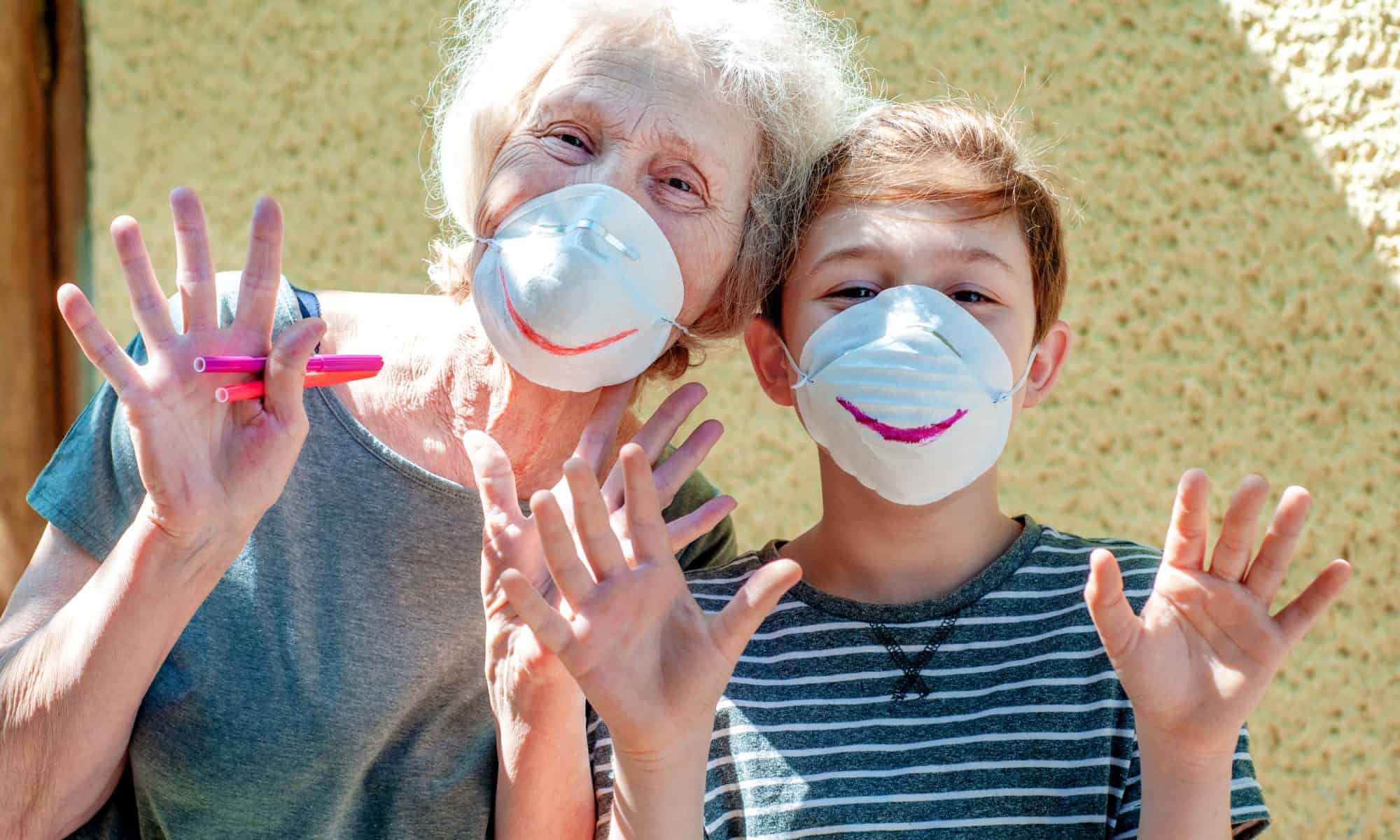
Mystics, scientists, and truth seekers have known for centuries that a deep and mysterious connection exists between our minds and our bodies. Some sages have described this connection as energy flowing through our bodies, connecting our minds to our physical shells and to the wider universe around us. So what happens when the stress and trauma of life interfere with that energy flow?
Disruptions in your body’s energy can have a serious impact on your life, and EFT tapping, or emotional freedom therapy tapping, is a powerful energy clearing technique that can restore that flow. Read on to learn more about how to use EFT tapping for trauma or how to use it to manage anxiety, stress, depression, and more.
What Is EFT Tapping?
Emotional Freedom Technique, also known as EFT tapping, is an alternative therapy technique that may be useful for anxiety, PTSD, and other fear-related disorders. This technique was developed in 1995 by Gary Craig, who believed the body has different meridians, or points where energy is more highly focused. He believed that by tapping on these meridians, a person could change their body’s energy.
EFT tapping for anxiety, or to address an array of issues, works on the same theory as acupuncture and acupressure. Instead of pressing on or sticking a pin in this location, however, the practitioner or patient simply taps on that meridian point. During this process, the patient focuses on the thing in their life that they want to change.
Who Can Tapping Help?
In general, EFT tapping is recommended for patients who are dealing with mental disorders. In particular, this treatment is a popular option for people living with chronic anxiety or depression. EFT practitioners say the technique is also useful for people with chronic pain, stress disorders, PTSD, and other fear-related disorders.
It’s important to note that, ideally, EFT tapping should be one part of your overall mental healthcare plan. In particular, if you have thoughts of hurting yourself or someone else, reach out to a professional immediately. EFT tapping will be most effective when used in combination with therapy and/or medication to keep your brain chemistry in balance.

How Does Tapping Work?
EFT tapping focuses on the body’s energy meridians, points around your body where your energy converges. Tapping practitioners believe that you can develop blockages in these meridians that interfere with your body’s natural energy flow and cause the problems you’re experiencing. You can see a practitioner for a tapping session, or you can do the tapping technique yourself at home.
Although the tapping is, naturally, a critical part of tapping therapy, much of the technique also revolves around mindfulness. As you’re performing the tapping, it’s important to focus on the issue in your life that you need resolved. This energy clearing technique can help to focus and remove any blockages you may be experiencing.
What Are the 5 Steps to Tapping?
If you’re ready to try EFT tapping for healing, here are the five steps that Gary Craig developed to help you harness its full power to guide you towards greater clarity, emotional release, and energetic alignment.
1) Identify an Issue to Focus On
When you get ready to begin a tapping session, it’s important to pick one particular issue to focus on. It’s best to get fairly specific with this issue so that you can tackle larger problems in manageable sections. Trying to tackle too much at once could interfere with your focus and make the therapy less effective.
Spend some time meditating before your tapping session, bringing your focus into the body and letting go of all distractions. Begin to direct your attention to the problems you’re facing, and narrow that focus down to one particular issue that’s interfering with your daily life and happiness. Begin to anchor your attention into this issue, drawing it in as the focus of your session.
2) Rate the Intensity
Once you have your focus set, it’s a good idea to rate the current intensity of the problem in your life. In other words, how serious is the problem, and how much distress and disruption is it causing you at the present moment? This will help you to track if the tapping therapy is working for you or if you need to try different techniques.
As you focus on your specific issue, think about how much this issue impacts you, your daily life, and your happiness. Rate it on a scale of 0 to 10, with 0 being only a mild inconvenience and 10 being debilitating. You can also assign this ranking based on how much the problem has impacted you at other times in your life.
3) Choose a Mantra
Now that you understand the scope of your problem a little better, it’s time to choose your mantra for the EFT tapping session. This will be a specific reminder phrase you’ll use to reset your focus throughout the session. These words can help to direct the energy change that happens during the session.
Your mantra should be one of acknowledgment and acceptance, recognizing that the problem is present in your life and offering compassion and acceptance to yourself. There should be no judgment—only recognition that this is a problem in your life and that you are still worthy and a divine being of light.
4) Follow the Tapping Sequence
With your mantra and focus centered in your mind, you’ll be ready to begin the tapping sequence. You’ll need to follow a specific order as you move across the tapping points. During your first few sessions, you may want to consult an EFT tapping chart to make sure you’re hitting the right meridian points.
Tap each point in the sequence about five times with your fingertips. You can tap the points that have twin positions at the same time, or you can just tap one side. Begin with the tapping point directly in the center of the top of your head, and then move to the beginning of your brows closest to your nose. Move to the bones on the outside corner of your eyes, then to the bone about one inch below your pupils.
Next comes the point between your nose and your upper lip, followed by the point between your lower lip and your chin. Finish with the points just below the inside ends of your collarbones and then those on the sides of the body about four inches below your armpits.
5) Rate the Intensity Again
Once you’ve finished the tapping sequence, take a few deep breaths, and then rate the intensity of your issue again. In an ideal treatment, you’ll notice that the intensity has gone down from where it was when you began tapping. However, you may notice that it takes a few rounds to see noticeable improvement. If you’re not seeing improvements, you may want to reference an EFT tapping chart.
Continue this tapping sequence, repeating your mantra with each point you tap. You may find that after a while, the changes to the intensity of your problem plateau. Once this happens or the intensity reaches zero, you can stop the session and return to it as needed.
Learn More About EFT Tapping
EFT tapping can be a great way to manage stress, reduce anxiety, and ease symptoms of depression. Begin by identifying the issue you want to work on and setting a mantra of acknowledgment and acceptance. Follow the tapping sequence, repeating it until the intensity of your problem has lessened.
If you’d like to learn more about EFT tapping, check out the rest of my site at PaulWagner.com. I am here to help you awaken and bravely create an inspired life. Learn more about my services today and start changing your life in the most positive way.

REMEMBER!
You are a beautiful Living Being filled with light and love, born from stardust. You have unlimited potential in every direction. With a focus on discipline, virtue, and your own goodness, you can become as expanded and liberated as you desire.




















